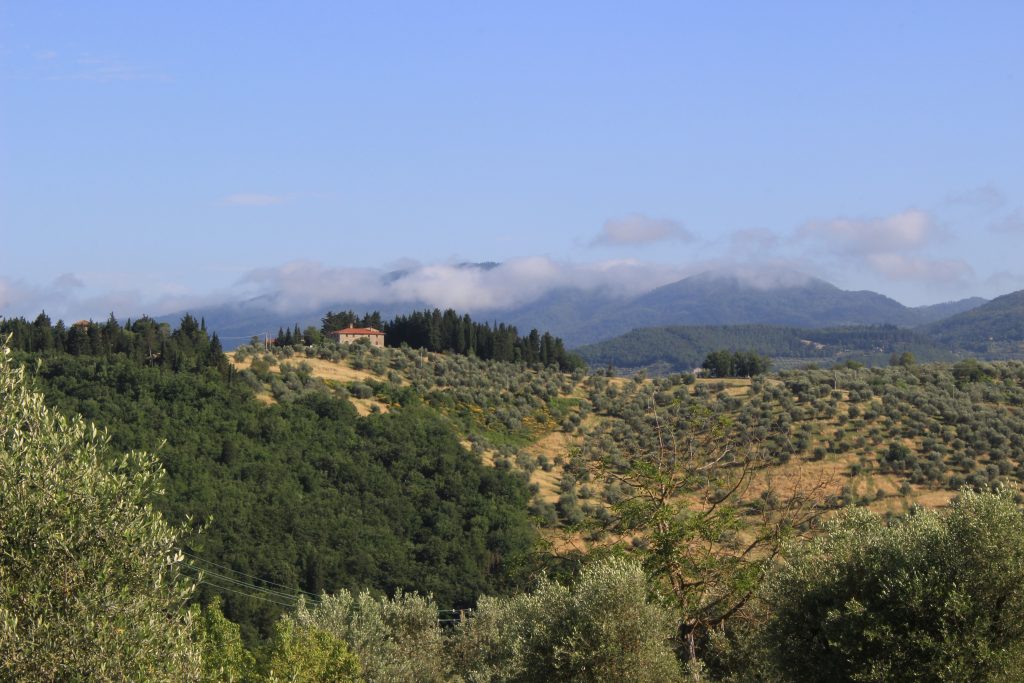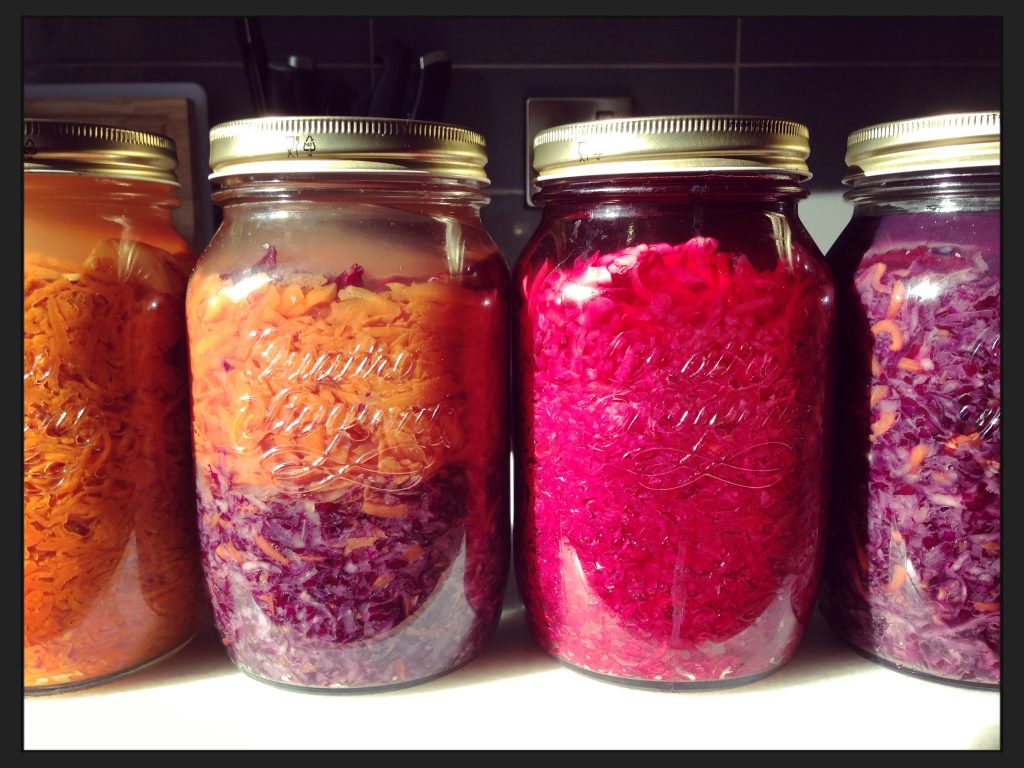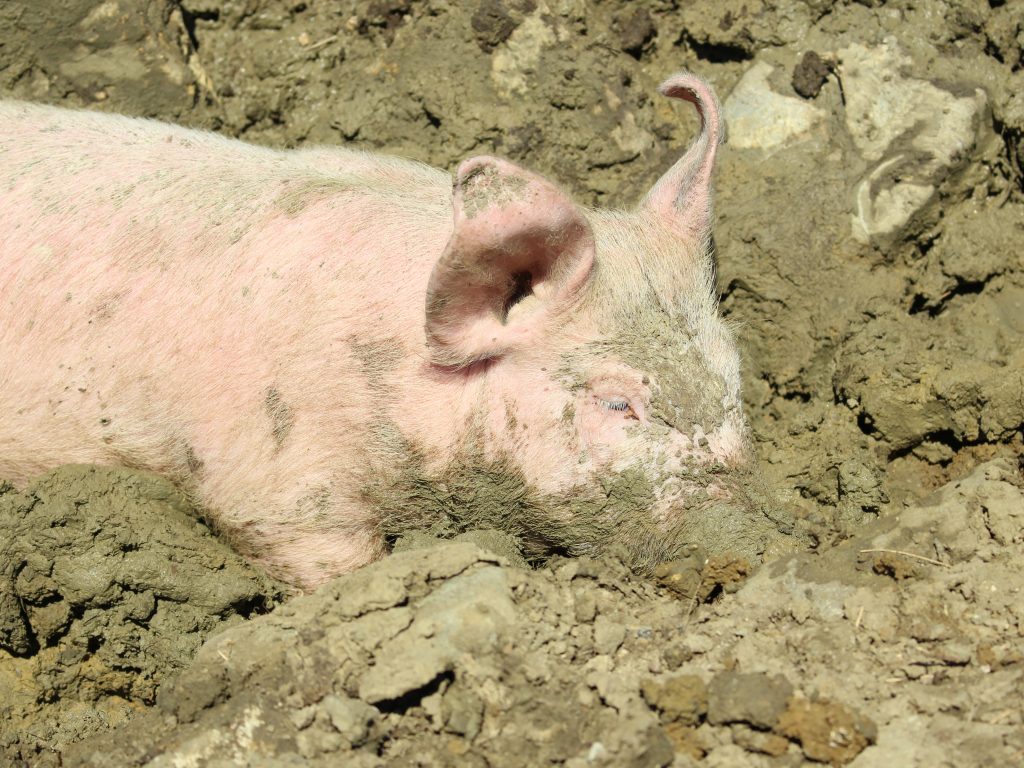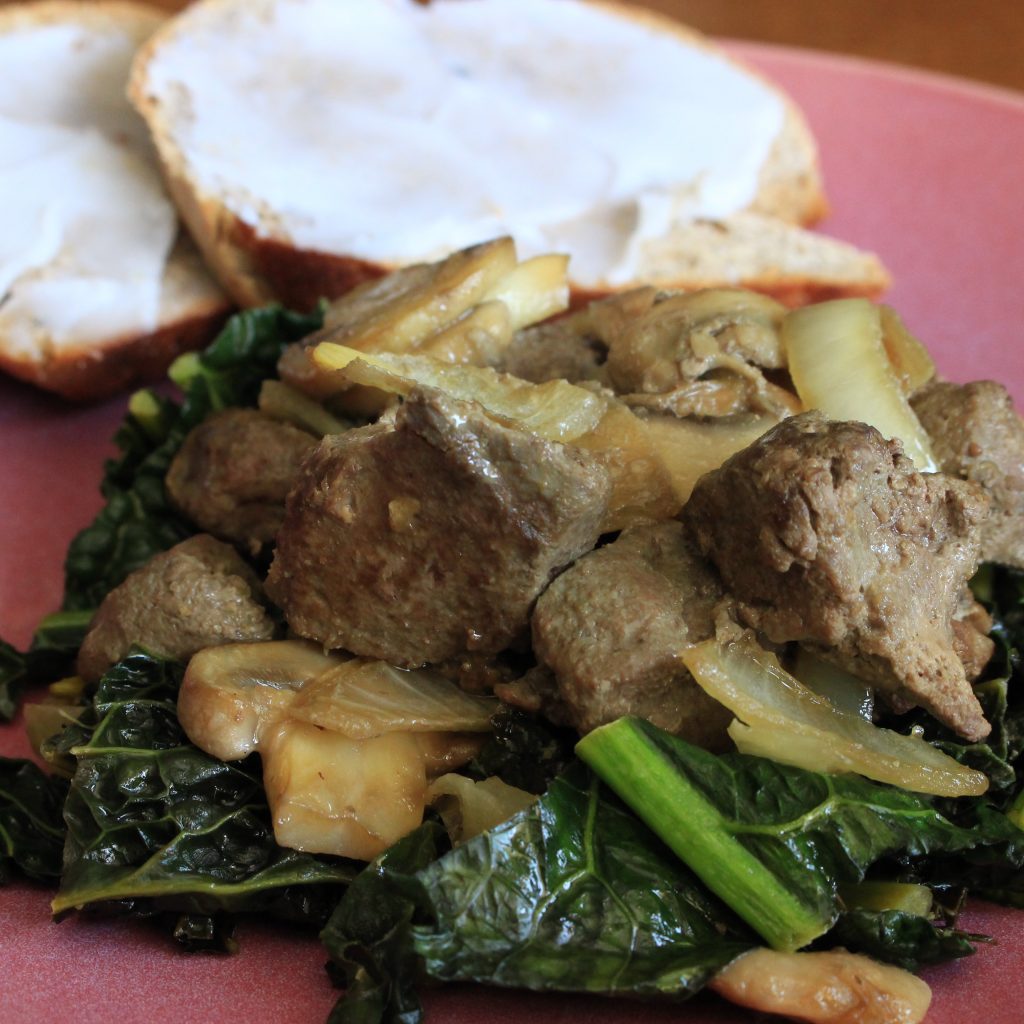The knife, in my right hand, hovers above a vastness of smooth, deep red. My left hand, spread wide, comes down onto this mass – a whole beef liver – to hold it steady while I slice thin strips. The cast iron pan, a permanent fixture on my stove, has been heating up. I scoop some tallow out of the bowl to its side and watch the fat melt into a layer of gloss.
Moving the sliced liver into the hot pan and watching it fizz and tighten, I think of the cow who gave me her liver. She grazed amongst the hills that I can see from my kitchen window. I went to the farm and chatted, in my wholely inadequate but hard-won Italian, to Francesca, one half of the wife-and-husband team that looked after her, that looks after her brothers and sisters, that looks after the land.

I know the liver won’t take long, so I turn to the plates upon which I’ll serve myself, my husband and my 6-year-old son lunch. There’s salad on them already, made from leaves tended by a local farmer. I chop in some pineapple sage that I’ve just picked. My own garden is small, but I love caring for it and when I cannot grow, I revel in the choice I make to give my money to people who look after the soil that covers another patch of this earth. I top our salads with sauerkraut, spooned from a glass jar. It reminds me of the slow, patient work we’ve done as a family to help restore our gut biomes.

Turning back to the liver, I marvel at its brown coating, knowing it’ll taste magnificent and then move back to the plates for the final touches. Sliced sourdough bread made from whole grains is laid by the salad and I spread it with local lard before gently placing slices of the liver to the side.
My son is already the the table as I carry the food over. I sit, looking between him and the meal and I breathe, satisfied. Satisfied because I know, deep in my body, that this is good food.
Good food. It can be such a loaded term.
But it needn’t be. In reality, it’s simple:
Good food benefits ALL who are involved.
Good food benefits our environment, the soil, the animals, the totality of nature, the farmer and the grower, our community, ourselves, our bodies, our biomes, our families, our mental and even our spiritual health.

The reason good food benefits all who are involved is because it connects all who are involved.
Every food choice we make gives us an opportunity to connect. And I mean connect at both every stage of it being made – from the seed to the fork, as well as connect at every level – with ourselves, with those around us, with all living beings and with nature.
It’s easy to feel this connection when you think of the best meal you’ve ever had.
Try it.
I’m betting you weren’t alone.
I’m betting care went into the preparation of the food.
I’m betting the environment was amazing – even magical.
Connection with people; connection with creativity, connection with surroundings. Get those three right and you’re looking at a really pleasurable meal: Good food.
But food gives us an opportunity to connect far greater than just in the eating.
We can choose to connect to the growing.
We can choose to connect to the selecting.
We can choose to connect to the purchasing.
We can choose to connect to the preparation.
We can choose to connect through the sharing.
AND we have the opportunity to connect in the joy of eating.
Good food is when we take that opportunity to connect and dance with it.
Each time we choose to look away – away from the plastic packaging, away from the industrialised production method, away from the more expensive milk that’ll actually pay the farmer what it cost him to produce – we are choosing to treat someone badly, to not face the pain. We are choosing to absolve ourselves from the responsibility of giving a damn about real people, real animals, real soil and a very real earth.
And in a sense, who’d blame us? Connecting with something or someone means making an investment, building a relationship. When we are in relationship, we see the other. We can’t ignore or push aside how they are affected. And that brings with it pain. Then conscience does a number on us and our choices – beneficial or detrimental – become influenced by this knowledge; this knowledge that there’s another – the independent farmer who can’t make a living, the topsoil that will be gone in 50 years, the pigs who are being fed genetically-modified soy grown at the cost of mass deforestation, the bees being devastated by multinationals getting rich on pesticides, the environment that’s altering in unprecedented ways, our own kind who are being made ill and dumbed-down by mass-marketed, commodity food.
The more we make connection, the more we have to choose food that benefits all involved because we know what effect not caring will have and we cannot choose to do anything different.

What I didn’t realise, before I started changing the way I shopped, was that when we do change our behaviour we are helping to heal not just everyone and everything involved in food, but we are also healing ourselves.
The further we go to cultivate connection with our food at every point we touch it and it touches us, the deeper our joy, connection and satisfaction becomes. We feel part of something, we know we are having an impact, our culture and fear-induced barriers are dissolved.
And how much the world needs dissolution of barriers right now.
This is good food.
This is its power.
When we grow, support, buy, select, prepare, cook, serve, share and eat good food we are connected, we are brought into conscious relationship and we make ourselves, along with everyone and everything we touch, whole.
And as I enjoy the organic liver, garden herbs and home-made local grain sourdough on my plate, eating alongside the husband and son I love, my wish is that everyone have the strength to not look away, to feel the pain, to connect, to choose differently and to change the way things are. All whilst enjoying truly good food.


Bring ancient grain baking into your kitchen!
Download my free 30-page guide with five healthy and tasty 100% ancient grains recipes.


This resonates so much with me. I was having a conversation with someone just today who was talking about how much more expensive local, organic eating can be. I asked how often she got a coffee, tea, or food item already prepared. We figured out that it came to about $20/week. That would buy some ground beef, eggs, and some milk for that week to add to what she already spent on groceries. The next week it could be something else. Slow changes are doable. I’ll share your article with her. Thank you 😊
Thank you, Tonya. I am glad the words resonate. I feel like cost is so very often put up as an obstacle, and for some is truly is, but for the vast majority, it is a matter or priorities, as you indicate. Thanks for sharing my writing!
Truly good food. Everyone can take steps to eating good food. It is the lost knowledge that I think keeps so many from doing it. You are doing great work.
Thank you. I appreciate you reading and sharing. I hope the more I can share the more influence I might have. You are doing wonderful stuff on your patch of land there too!
Fantastic first piece!! I loved this and as I read felt with my senses all you were saying. I could see every process in my mind’s eye. Thank you for beginning this journey. I’ll be right along side you. This piece has inspired me…. inspired me to look at things differently. To think differently. About moving in a different direction. Can’t wait for your next piece xx
I’m glad that your senses were engaged. That’s what I love most about food and cooking – we can get that much tactile joy and also do good! I appreciate your support. I am really keen to write more, so will be trying to carve out time. My little IG monologues help keep me going when I can’t get to the blog.